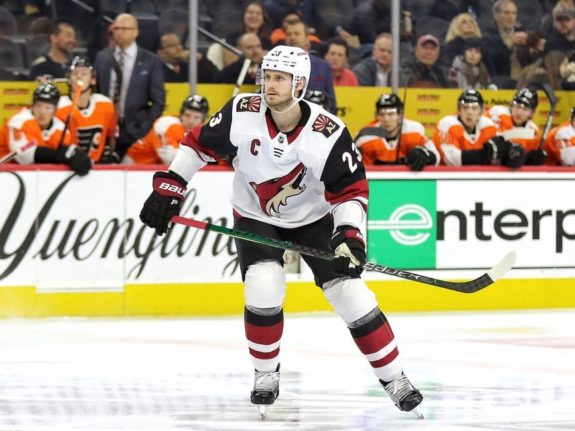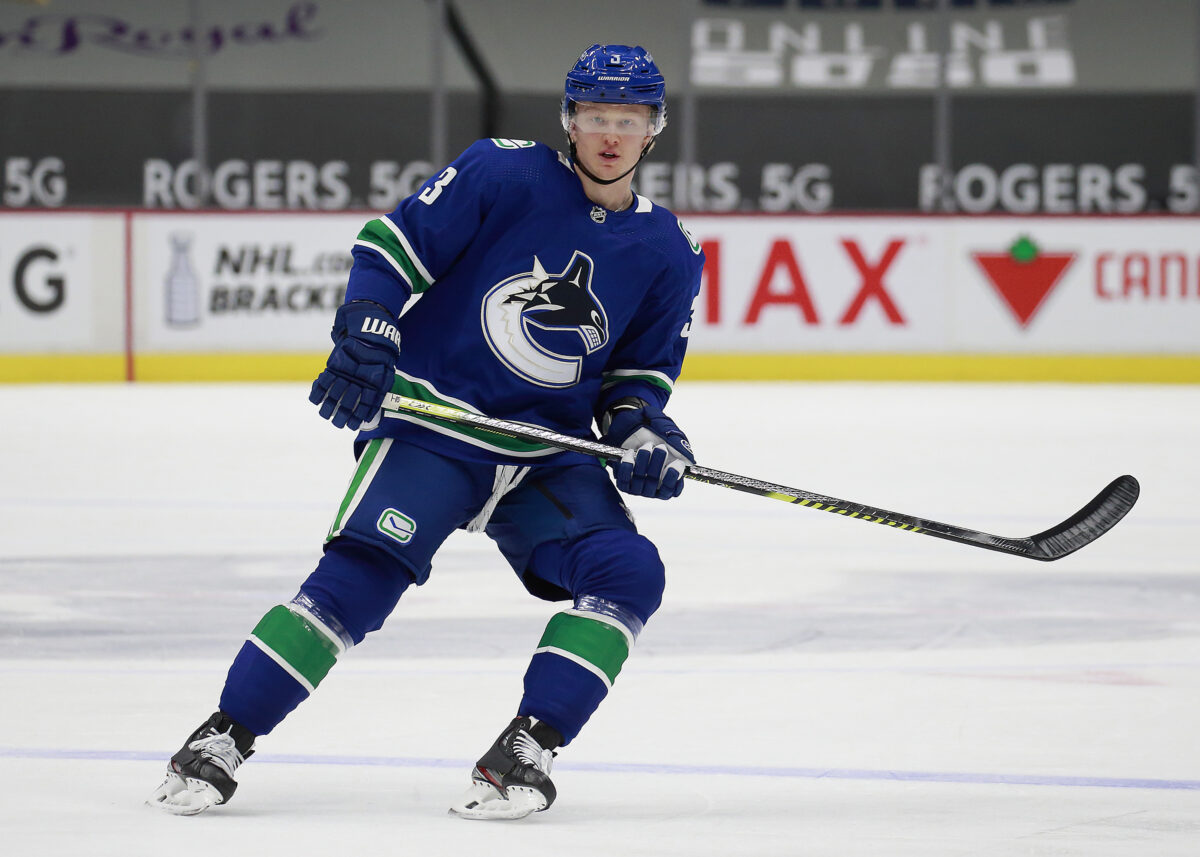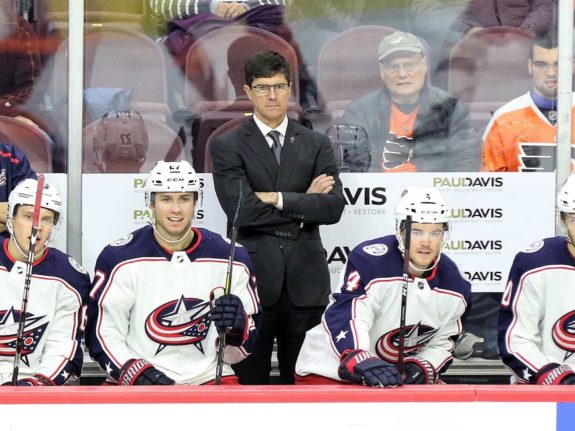It’s been a long time since the Vancouver Canucks had two lethal power play units. Even the 2010-11 version of the team really only had one that carried the mail in Daniel and Henrik Sedin, Ryan Kesler, Christian Ehrhoff, and Mikael Samuelsson. They accounted for 52 of their 72 total power play goals that season. You might have to go all the way back to the 2005-06 season when the Sedins and Anson Carter were the best second line in the NHL to find a dominant second unit. In fact, Carter scored nearly half of his 33 goals on the power play riding shotgun with the twins.
Related: Canucks’ Aggressive Offseason a Success So Far
Well, the wait for an effective second wave of attack may be over. Next season promises to have a deep enough lineup to ice two potentially elite groups of five that could result in the Canucks having one of the best power plays in the NHL. So, with all that said, let’s take a look at the units that should make that a reality.
Power Play Unit No. 1
Brock Boeser – J.T. Miller – Elias Pettersson
Oliver Ekman-Larsson – Quinn Hughes
The Canucks have traditionally used a four-forward set on the power play in the past, but with the addition of Oliver Ekman-Larsson, they should break that trend next season. Ekman Larsson is an elite presence on the power play with 55 career goals and 161 points, so it’s almost insane to not include him on the top unit. With the continued dominance of Quinn Hughes, who already has three goals and 46 points on the power play in his young career, that duo could be a lethal combo walking the blue line with the man advantage.

As for the forwards, the Lotto Line transitions from 5-on-5 to the power play as a set line. Their chemistry is undeniable at even strength, so why not move the party to special teams? With a new power play coach in either Jason King or Brad Shaw, we hopefully will see more one-timers from either circle with the double-barrelled action of the left and right one-timers of Brock Boeser and Elias Pettersson. They are two weapons that have never been used enough by former coach Newell Brown. When you see the success of the Tampa Bay Lightning and their threats of Steven Stamkos and Nikita Kucherov, you can’t help but wonder what could be if the Canucks employed the same tactics on their power play.
Adding Ekman-Larsson to the first unit means a forward has to drop to the second unit. J.T. Miller replaces Bo Horvat as the net-front presence, allowing the captain to center the second wave, which is arguably not that much of a drop-off from the first.
Power Play Unit No. 2
Conor Garland – Bo Horvat – Vasily Podkolzin
Nils Hoglander – Jack Rathbone
Going back to the four-forward set on the second unit, Jack Rathbone takes over as the quarterback with either Conor Garland or Nils Hoglander manning the other point. With how good Hoglander is defensively and how elite his playmaking is, I am going to nominate him as Garland may be more effective as a right-hand shot in Boeser’s position at the left hash marks.
Early in his professional career, Rathbone has proven to be a force on special teams with his vision and hard one-timer. Scoring his only two AHL goals on the power play and doing it in impressive fashion with quick moves at the blue line, he might end up being the key to the success of this unit.

The forward group is where it gets exciting. Horvat, who has been a mainstay on the first unit the past few seasons, joins his projected linemates on the second unit next season. He has been a one-man wrecking crew in the bumper position for a while now with 36 goals over the last three campaigns. With him and his faceoff prowess, this group should have the puck more often than not, which should enable the skill of Rathbone, Garland, Hoglander, and Vasily Podkolzin to shine.
Speaking of Podkolzin, he could be one of the most exciting additions to this power play. Watching him overseas and with Team Russia, it’s become apparent that he’s insanely elite in front of the net. Chris Faber of Canucks Army even compared him to Kesler, the man who scored 47 goals as a net-front presence with the Sedins during the glory days of the 2010s.
The comparison I make to him on the power play is Ryan Kesler. Kesler was a good finisher in tight who was excellent at retrieving pucks. The biggest thing about Podkolzin’s power play game is something that Kesler was also excellent at: being an extra passing option, instead of just a guy screening the goalie.
Chris Faber, Canucks Army
Throw in the tenaciousness, playmaking, and puck retrieval skills of Hoglander and Garland, and this unit may never give up the puck when they get set up in the offensive zone.
Canucks Special Teams Will Thrive in 2021-22
We only discussed the power play in this article, but the penalty kill should also be a strength of the Canucks next season. With the addition of Jason Dickinson, the return of Brandon Sutter, and most importantly, Shaw’s presence behind the bench, they should be in the top ten by the end of the season.

The power play, which has become a little stagnant in recent years, will have a new voice for the first time in a few seasons. It will be interesting to see how the system changes and how the new coach, whether it be Shaw or King, uses the new personnel in Garland, Podkolzin, and Ekman-Larsson. If all goes well, we should also see the Canucks ice a top-five power play too.
As the Lightning have shown us the past two seasons, championship teams are built with great special teams, especially a dominant power play. For the first time in a long time, the Canucks have the ingredients to create a power play that not only has an elite first unit but a second one that has the potential to feast on the opposition’s lesser penalty killers. That, Canucks Nation, hasn’t been seen on the West Coast in decades.
Statistics taken from Hockey Reference and NHL.com